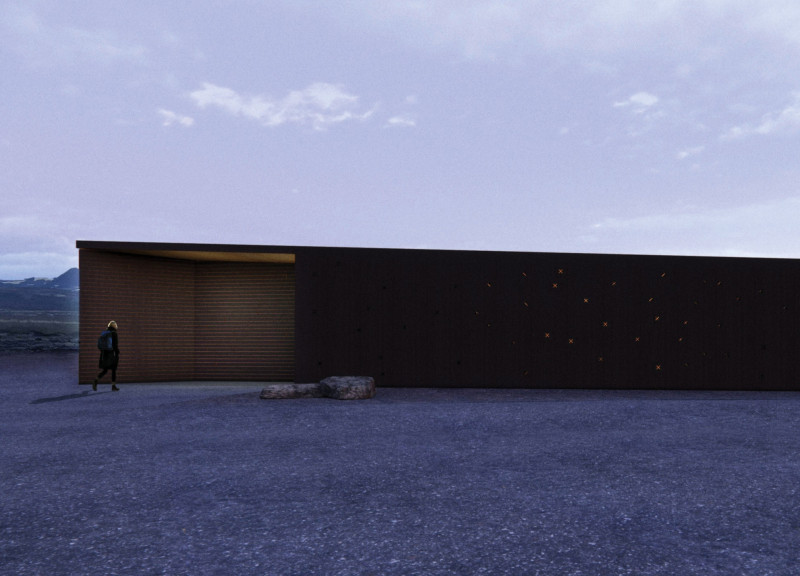5 key facts about this project
The coffee shop’s primary function is to offer a place for visitors to gather, relax, and enjoy refreshments after outdoor activities. The design integrates visitor amenities with a strong emphasis on user experience. It features a visitor center that connects directly to the main coffee shop area, creating a seamless transition for individuals arriving from their outdoor pursuits.
The building stands out due to its unique relationship with the surrounding landscape. The choice of materials, including Cross-Laminated Timber and burnt wood cladding, allows the structure to blend with the volcanic terrain while offering modern durability. These materials not only address the aesthetic qualities of the project but also enhance its thermal performance, which is crucial in Iceland's climate. The use of polished concrete flooring contrasts with the warmth of the timber, contributing to an interior environment that is both contemporary and welcoming.
Additionally, the architectural design incorporates expansive glass facades, providing views of the natural surroundings and reinforcing the connection between the interior space and the exterior landscape. This element of the project encourages patrons to engage more deeply with the environment, creating an immersive experience.
The layout of the coffee shop is purposefully designed to guide visitors through a series of interconnected spaces, reflecting the natural trails found in the immediate area. The intentional flow within the architecture promotes social interaction and facilitates a sense of community among visitors.
Another noteworthy aspect of this project is its focus on sustainability. The architects have ensured that the building is not only functional but also environmentally conscious, addressing the need for energy-efficient practices in modern architecture. The use of insulation and vapor barriers enhances the building's energy performance while providing comfort to its occupants.
Through its thoughtful integration with the environment and focus on user experience, the Hverfjall Coffee Shop represents an effective architectural response to the challenges posed by its location.
For more insights into the project, including architectural plans, architectural sections, and architectural designs, readers are encouraged to explore the detailed presentation of this development. The architectural ideas that shape the Hverfjall Coffee Shop illustrate a practical approach to design that resonates with its surroundings while serving the needs of its users.


























